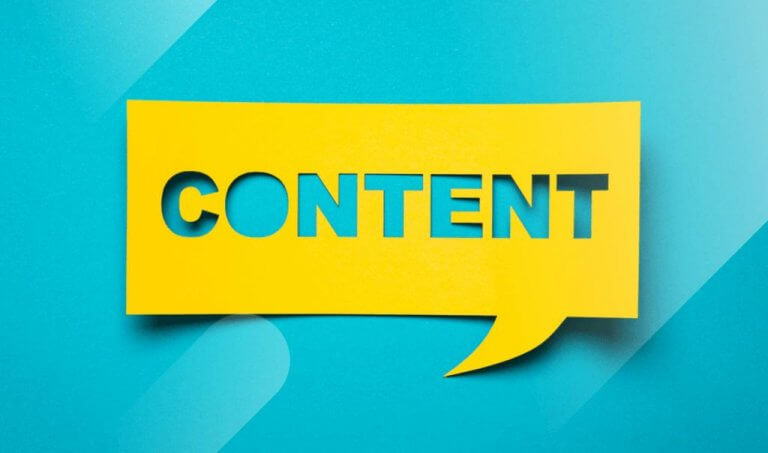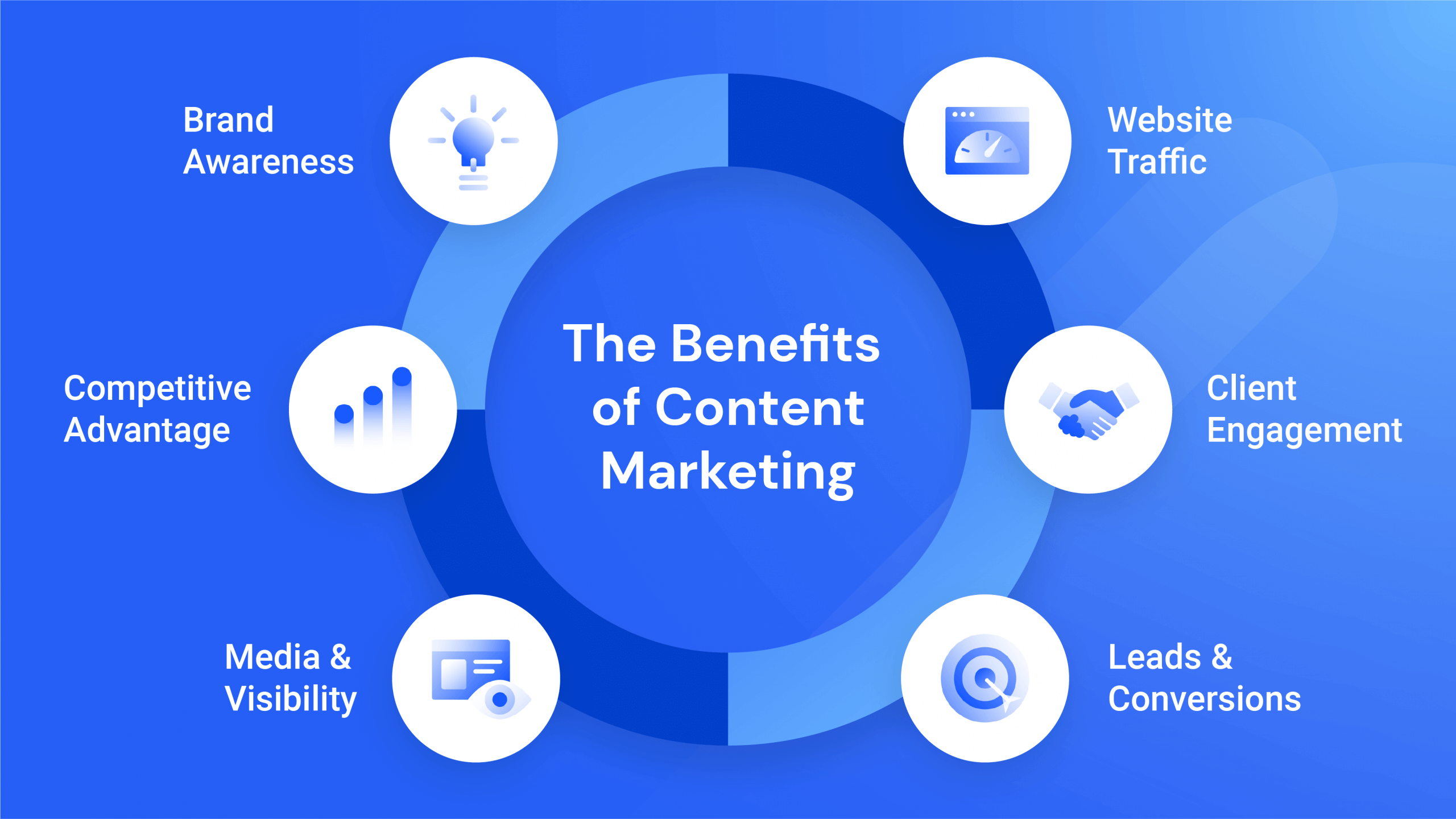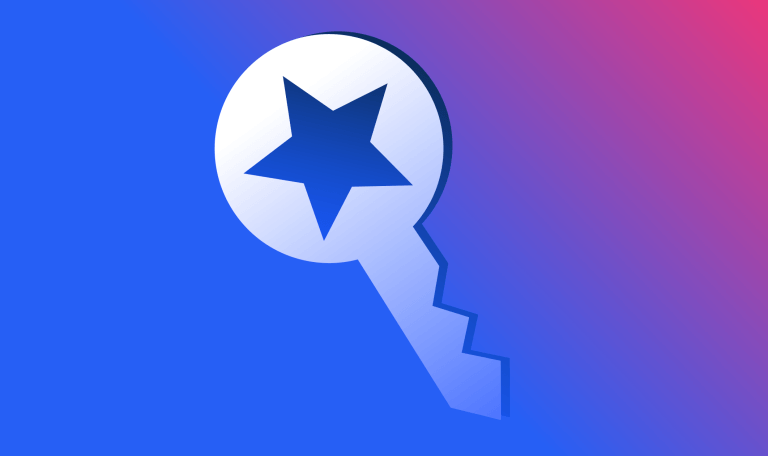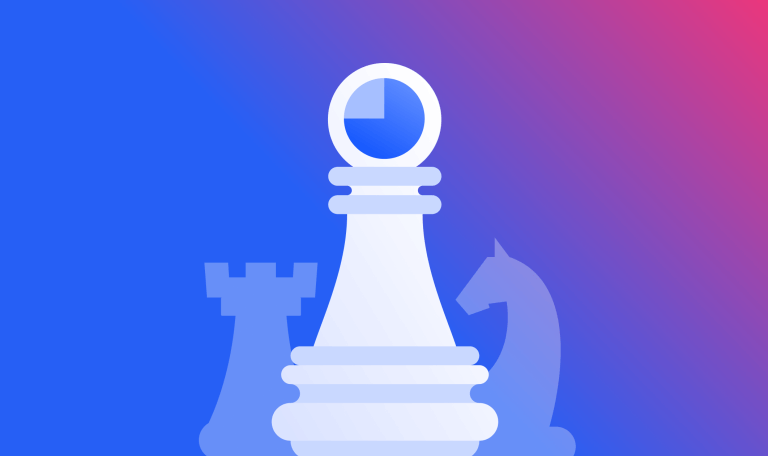How to Build a Content Marketing Strategy That Converts More Customers

Prospects don’t just want to hear how amazing you or your products are. What they really care about is how you will solve their problem. It’s that simple. The reality is that the number one purpose of digital content marketing is to give your audience a valuable solution starting with educational content and ending with your products or services. Can other marketing formats do that? Frankly, not without great content.
OK, so we know you need content and we know you need an actual strategy, but how do you address a customer’s pain points in a natural way? You set out a goal to solve their problem, not to make a sale. Little secret: The sale will come if the problem is actually solved.
Now back to the strategy. Even if you have the best and brightest writers in a room, you must build your plans on data-focused research.
So, let’s dive in to answer your critical questions and get started on developing your own powerful content marketing strategy that will make an impact this quarter and beyond.
But first, the bread and butter…
What is a content marketing strategy?
If I put it in the dictionary, I’d say: a content marketing strategy is the creation and distribution of content that offers value to your target audience. So naturally, your audience’s needs are at the core of the content you create. By providing a consistent flow of useful information addressing their questions and challenges, you can attract prospects to your site. This type of inbound marketing is designed to drive customers to convert and grow your profits.
In short: You educate and generate demand through valuable content. (*key word: valuable).
The challenge: It does need to be consistent.
Does content marketing work?
According to the Content Marketing Institute (CMI), content marketing ranks in conversion rates six times higher than other methods. Content marketing also leads to more indexed pages and backlinks.
A survey by CMI in cooperation with MarketingProfs, shows that 90% of B2B businesses use digital content marketing. 74% of them rate content marketing as being from moderately to extremely successful.
What makes the technique successful? The survey shows that having a documented strategy plays a predominant role and effective targeting contributes to its success.
You need to know that it can take time until you view results. Measuring results is a little more cumbersome than in many other marketing methods. On the upside, content marketing incorporates many specialties and connects your digital marketing strategy to related activities.
Check out our guide for B2B content marketing strategy to drive maximum impact.
What is a content funnel?
A content funnel leads your prospects from getting to know your brand, then your product through the purchase phase. Quality content that is organized well moves prospects through each stage of the funnel. From the top of the funnel (TOFU), which introduces your product or service to the middle of the funnel (MOFU), where people enter the consideration or evaluation phase. Finally, there is the bottom of the funnel (BOFU), the purchase phase, and the post-purchase phase.
Customers often reach purchasing decisions gradually, especially in the world of B2B. After one question is answered, a new one arises. Therefore, each stage of your content funnel should move the relevant prospects toward the next step in the process. Your goal is to provide the right content at the right time to help your target customers learn more about the value your product offers. You know, take them out to dinner before you introduce them to the family… Am I right?
In all seriousness, marketing is relationship building, and content has the greatest potential to add significant value to those relationships so, you should use the buyer personas you created to understand your audience and build on that relationship specifically. If you haven’t delved deep into your personas yet, not to worry, we get there later on in this article.
People need to know your product offers them a solution before they can start to evaluate the quality. You can analyze and optimize your conversion funnel and the related content data. With a tool like Similarweb, you can identify if your audience is moving through your content funnel as expected and determine where you need to add or improve content.
In the graph below, we’ve used the Business Performance Landscape page and filtered for “Converted Visits” and “Conversion Rate.” At a glance, we can see Amazon.com is outperforming the competition in terms of conversion rates by far. The next step would be to check out what Amazon.com is doing differently from its competitors, drilling down further into the data.
Matching your content to your funnel
The goal of having content in your funnel is to go from potential customers to customers. To do this you have to carefully craft your strategy to nurture your audience down the funnel with content that matches where they’re at. Identifying which content goes where and how to connect the dots in between is crucial. Here is an in-depth look at content types for each funnel type to help you start mapping out what you should focus on.
TOFU – Awareness
At this stage, the focus should really be brand awareness. You are addressing your audiences’ pain points and introducing yourself as the solution.
Here are some of the best content types for this stage of the funnel:
- Blogs allow you to show your expertise with high-quality articles and answer questions that come up for your audience. Blogging is an efficient medium to educate your audience, offer advice, and point them in the right direction. Encourage engagement and sharing.
- Social media posts let you promote your content and get noticed. Social media networks are also great for sharing related articles on your page.
- Infographics are visually attractive and present data and statistics in an easy-to-digest manner. You can reach people who can’t be asked to read lengthy articles.
- Video clips are often more powerful at this stage than written content. It’s easier to raise interest with a one-minute video clip on social media or your blog than with text.
These are great ways to reach an audience that doesn’t know you (yet). We are not talking about posting offers or pitching your product. At the top of the funnel, you need to show empathy, raise curiosity, and offer useful, and engaging content. That will make an impact on your audience and will keep you on their mind.
MOFU – Consideration
At this point, your audience recognizes you and appreciates the value you provide. They’re ready for the next step of learning about how they can benefit from your solution. Here are some effective content ideas:
- Videos are useful in every stage of the funnel. When you address prospects in the consideration phase, your videos should present a definitive idea or piece of information. A few minutes will do the trick.
- Podcasts have grown increasingly popular. Consumers listen while they drive, jog, or do the dishes. Use a podcast to discuss topics around your buyer personas’ pain points. Share bits of your unique knowledge that can help others. Help them feel understood and offer encouragement.
- eBooks and free guides help build your credibility. People love to get something for free. Make sure you provide truly valuable guidance that prospects can act upon. Even if it doesn’t turn them into customers yet, they will remember you when it’s time to make a decision.
- Webinars give people the chance to get close to you without having to engage with you personally. Offer them something that shows your strength but doesn’t focus primarily on your product or service. Allow participants to ask questions. Webinars are a powerful way to create familiarity that makes it easy to follow up.
The information you provide still doesn’t need to be solution-oriented. Address a specific pain point your prospects share and present possible solutions. Again, the idea is to educate and support, not to sell.
At this point, gated content may sometimes be useful to collect emails for future communication and segment your leads.
BOFU – Decision
Now, your prospect is ready to reach a decision and needs to know why they should choose your product and not someone else’s. Personalized content can make all the difference here. You can use these content formats:
- Emails, when segmented and personalized, touch on potential customers’ individual concerns. You can distribute selected long-form content in a call-to-action (CTA) that links back to your site or blog via email marketing.
- White papers get into the benefits of your product or service. White papers use data and facts to help convince your prospects and remove doubt and concern.
- Case studies present fact-based accounts of how you’re a proven problem solver. A case study describes the process of identifying a particular challenge and solving it with your product or service.
- Success stories are similar to case studies but use a more personal and emotional approach. The idea is to get the reader to identify with the issue at hand and believe you have the solution.
- Testimonials of satisfied customers build your credibility and back up your problem-solving status. Indecisive prospects will trust a third party more easily.
Do you see how your product or service has moved into focus at this point? Still, a good content marketer’s goal is to convince potential customers by providing relevant information even at the bottom of the funnel rather than slapping on a “Go Buy It” CTA and dropping the mic. Effective content needs to focus on your customers’ needs and how your product supports those through providing product details, facts, and accurate, truthful testimonials in a natural way.
Post-purchase – Retention marketing
It doesn’t stop there. Once you’ve turned prospects into customers, part of your content efforts should be directed at building brand loyalty. Retain your customers, keep them interested, and engaged with:
- Personalized email lets your customers and subscribers know how much you value them.
- Social media campaigns keep them engaged with special offers, raffles, quotes, and updates.
- Blogs keep them updated on upcoming features, events, new developments, industry news, etc. SaaS companies often have a dedicated blog for registered users offering guidance, support, and product updates.
- Webinars provide hands-on support. Help troubleshoot common potential issues or introduce new features. Help customers use your product more efficiently.
- eBooks educate about best practices and industry statistics.
How to create a content strategy
The concept of digital content marketing is to draw potential customers to your site instead of reaching out to flaunt your products or service.
Have we said that enough? It’s honestly worth belaboring the point because we see it wrong so frequently.
Relevant facts and reliable figures are the foundation (we better not see any data-free content after you’ve read this far), but not enough to charm your potential customers. Your content needs to resonate with your audiences’ state of mind, values, needs, and concerns. Only then will they keep coming back for more.
The 4 W’s of content marketing
Before we get into the nuts and bolts of building your strategy, let’s review the four W’s, well really three W’s and one H, but who’s keeping track. Answer these to make your content relatable and personable.
- Why? The purpose of your content and its goals (each one)
The main purpose is to help, support, and educate your audience. Ask yourself what they need that you can provide. Answer questions they might have. Give solutions for issues they struggle with. Educate and offer guidance.
- Who? The audience that will benefit from the content (get as specific as possible).
Determine who you are talking to. The same people who would benefit most from your product should be the ones benefiting most from your content. Your content strategy should build around your buyer personas. You need to understand where they are in the content funnel or buyer’s journey so you can create relevant content.
- What? The story of your unique value proposition.
To create compelling content, you’ll want to draw on the company story. This ensures consistency with which you build trust and credibility. Your brand story includes why you’re doing what you’re doing, the values your brand stands for, and how you successfully advocate for your customers. Your content needs to touch on these points while staying true to your core values.
- How? The process of developing and distributing your content.
This represents the operational part of content marketing. It includes the content creation process, its distribution across different marketing channels, scheduling, management, and measuring. A successful strategy requires coherent workflows and allocation of responsibilities. Without this, it’s just more noise on the internet.
1. Create buyer personas
The buyer persona represents your ideal buyer. The idea behind creating a buyer persona is to understand your potential buyers’ needs so that you can address them specifically. To start, draw a detailed image of the person who will benefit from your product. Then get a feeling for their pain points, desires, habits, fears, and so on. This will help you slip into your audiences’ shoes, identify what will get their attention, and touch them to find what resonates best.
You’re not stuck with just one. You can create several personas with different characteristics. This allows for a greater variety of personalized, focused content.
Easily create your buyer personas, download our buyer persona template below.
2. Map out your content
The first step in strategizing is a comprehensive content audit in which you map all your existing content. Create a detailed overview and list every piece indicating the type of content, the topics, the message, and the target audience.
Content marketing is about reaching the right person at the right time with the right message. The content mapping lets you
- Allocate each piece of content to a stage in the funnel and ask if it answers the prospects’ questions sufficiently.
- Identify gaps in the content funnel. Based on that, you can decide what to add, remove, or repurpose.
- Make sure the information you provide helps the potential customer, is relevant to your target demographic, and moves them to the next stage.
3. Find new content opportunities
Generating ideas is one of the top challenges every content creator faces. Especially in content marketing, you need to constantly produce new ideas, come up with new topics, and pick out opportunities to spread the word.
You can’t rely solely on inspiration but rather you need to create a method that ensures unique valuable content every, single time. You also need to make sure to cover all funnel stages and reach all target personas.
You want to discover what your audience is interested in. Many ways lead to the promised land. Here are a few:
- Social listening: Find trending topics with tools such as Sprout Social and BuzzSumo. Use hashtags to find out what people are saying on social media about a specific topic.
- Groups and forums: Research questions people ask in industry-related forums and groups. Roam Quora for popular queries and questions that aren’t sufficiently answered.
- Competition: Find your competitors’ most popular content. Follow their content and see how people react. Use Similarweb analytics to do a competitive content analysis and find which competitor content receives the most traffic.
- Analyze content performance: Use web analytics to understand how your content performs and which works best.
- Sales and customer support: Get input from your teams about actual questions and concerns prospects raise.
When you do your research, don’t just look at the content but also consider how it’s packaged. You need variety. To accomplish that, repurpose high-performing content by repurposing it for a different medium or presenting it in a different form. Spice up your content marketing plan with an occasional interview, a behind-the-scenes story, a sneak-peak into your product, the crushing of a common myth, a guest post, internal news, etc.
Make sure to collect and keep ideas in a graveyard doc. Organize them according to categories so you can quickly find content ideas when needed.
4. Create your content brief
Each piece of content needs to present something unique and focus on a key point, framed in recurring recognizable marks. For example, if you use video marketing, your videos should start with the same intro and end with the same outro for viewers to instantly recognize you.
Define the guidelines for recurring structure and elements and then create a brief for every content asset. A content brief includes all the relevant information needed to produce the specific piece.
Here are the main points to cover:
- Type of page/content
- Primary intent/purpose
- Target audience
- Funnel stage
- Focus keywords
- Intended action / CTA
- Internal/external links
- Main topics to address and questions to answer
- Approximate length
- Competitor content / resource suggestions
5. Incorporate SEO into your content marketing strategy
Search engine optimization (SEO) is an essential component of digital content marketing. In order to drive organic traffic, your content needs to rank well on search engines. Here’s how it works: To reach the intended reader, you need to conduct focused keyword research to meet their search intent on organic searches. Internal linking then strengthens your SEO and is part of the infrastructure your content marketing builds on.
For example, you can create clusters of content. The centerpiece, also called ‘pillar’ (like this one) would cover the main topic you want to focus on and supporting pieces focus on related topics. For our support, we covered content trends, content calendars, SEO content, and so on. You can then keep adding content around the same target keyword, expand your content cluster, and strengthen your SEO. And also optimize your pillar to include more links as you build out more articles on the topic over time.
Make sure to use advanced keyword research tools, such as Similarweb, for effective targeting and data analysis. Access to comprehensive data will help you identify trending keywords, see which keywords drive traffic to your competitors, and get inspiration. You can see the breakdown of traffic from organic vs. paid, search volume, and competitive traffic share.
6. Choose your content distribution channels
Surely after reading this article, you will create amazing content. Then, you’ll need to get it out in front of the right people in the right funnel stage. This step requires equally detailed planning and is equally as important in ensuring the marketing part of content marketing is a success.
There are two main reasons why it’s a bad idea to simply shoot your pieces of content out wherever you can. The first is the same reason you wouldn’t put flyers in all the mailboxes in town. The effort is not worth the outcome, and you risk being marked as the dreaded spammer. Second, it’s almost impossible to track and measure results.
Consider your distribution channels and their advantages. Your owned media channels, like your website and social media pages, grant you maximum control. However, the reach is limited. Shared media, or media that your brand co-owns, such as user-generated, co-created partnered, or influencer content gives you exposure but limits your control. Paid media can be powerful, but also expensive.
When you create a piece of content, first you define its purpose and the audience’s characteristics, and then you can focus on the distribution channels that match your business goals.
Make sure distribution isn’t an afterthought when building your content strategy. Great content and successful content are not always one and the same. The difference often is the distribution strategy and the marketing campaigns that surround it.
My recommendation: Use paid where you can see an ROI (even if it’s a long funnel, you need to be able to ensure that investment is coming back). Use partners and influencers for the most read assets. You already know people love it, you just want more eyes on what you’re proud of. Use your own channels to test the waters. See how your community responds and allow it to impact your strategy moving forward.
7. Develop an editorial plan to navigate your strategy
Did we mention that the success of content marketing depends on consistency? We can’t say it enough. Hopefully, it’s not stuck eternally in your brain (or maybe, hopefully, it is).
To keep up with the pace, you need a long-term schedule for publishing content – an editorial plan or a content calendar that functions as a GPS to your content marketing goals. A shared editorial calendar lets you keep everyone on track with the content marketing strategy, coordinate and prioritize tasks and meet deadlines.
You already have a content audit and a graveyard doc or file for ideas. Now it’s time to decide on the frequency of blog posts and other assets, determine a workflow and allocate responsibilities to your marketing team. Next, you’ll start scheduling dates for publishing and finally add the content topic and further necessary details. You can also create a separate social media calendar for planning your content on the different social platforms.
The content calendar is a collaborative working document that should show the progress and status of content creation.
No need to invest days in creating one, just take mine.
8. Set up a content marketing strategy checklist
There isn’t one right way to create your content strategy. The needs of each industry and audience vary. What we are presenting is a basic guide that includes key points to address and document when laying out your plan and marketing efforts.
- Create personas: You can create as many buyer personas as you feel is necessary. Define them as actual people with a name, age, family status, education, occupation, or position in the company, interests, lifestyle, pain points, etc.
- Conduct keyword research: Use a platform like Similarweb, *wink wink* to find what your target audience is searching for and which keywords to focus on the topics you want to cover.
- Map your content: Create a map of all your content and how the items connect. Write down the topics, the message, the issue it addresses, and the persona it targets.
- Create your content funnel: Decide what kind of information you will provide throughout the funnel and which type of content to use. Allocate your existing content to the stages in the funnel.
- Pick distribution channels: Determine how your audience will find or receive the content and how you will promote it based on your most effective marketing channels.
- Set SMART goals: Define what your content strategy is to achieve within your overall digital strategy. Set measurable goals. Identify the metrics that will provide the relevant data. Your goals should be representative of the specific stage of the funnel using relevant KPIs. i.e., measure conversion in the decision phase, not the awareness state. Measure engagement rate on content aimed at engagement, not on building backlinks or increasing website traffic.
- Get a budget: Creating high-level content involves a lot of time and effort. Your main expenses are work hours and paid search, should you decide to include that.
- Create content: Create static pages and content items. Make a content calendar for ongoing content creation and distribution. Consistency is critical for the success of a long-term content marketing strategy.
- Distribute: Build a strategic content distribution plan to make sure the right audience sees the content you have created. Consider all the possible distribution channels you have access to and where your target audience consumes content as well as the pros and cons of each channel.
- Track results: After you’ve successfully shared your content, you need to keep tabs on the data to fine-tune and keep your content relevant. Just below we’ll dive into how it’s done.
9. Track the data
Make sure to set quantifiable goals for your content marketing efforts and what you expect to achieve. To expand your reach and improve ROI, you should track your traffic, engagement metrics, and conversion of each item you publish. You need to use accurate data with a trusted platform like Similarweb in order to get the most actionable insights. Define the overall purpose of your content marketing and also set periodic goals for the different content channels and assets.
10. Analyze and optimize your content performance
Just when you thought you’d reached the end, the circle starts again. Once your content is out there, you want to analyze performance and keep optimizing.
Monitor and check traffic and engagement metrics to see which content is most popular and leads to conversion if that’s your goal. With Similarweb’s digital marketing toolkit you can compare and benchmark traffic and engagement against your competition. You can also analyze your conversion funnel and optimize your keyword strategy. Really it’s a one-stop-shop, where you can do your initial research and then optimize once you’re done.
A systematic, ongoing data analysis lets you decide on optimization steps. Whether it’s adapting content to emerging keyword trends or repurposing high-performing content.
Conclusion
When you put an effective content production process in place and regularly track your results, you can hone your content marketing strategy and ensure it’s the game-changer for your company’s marketing division. See where opportunities exist in your space. Get access to the most accurate and trustworthy data available. Try Similarweb now.
Further reading: eCommerce Content Marketing: The Ultimate Guide
Content marketing strategy FAQs
What is a content marketing strategy?
A content marketing strategy refers to the creation and distribution of content that provides your target audience with value.
What is a content funnel?
A content funnel leads your prospects from an introduction to your brand, through to the purchase phase.
What are the stages of a content funnel?
The top of the funnel (TOFU) introduces your product or service to prospects, the middle of the funnel (MOFU) moves your prospects to enter the consideration phase, and the bottom of the funnel (BOFU) moves your prospects to the purchase phase.
The #1 content marketing tool - get started
Give it a try or talk to our marketing team — don’t worry, it’s free!














